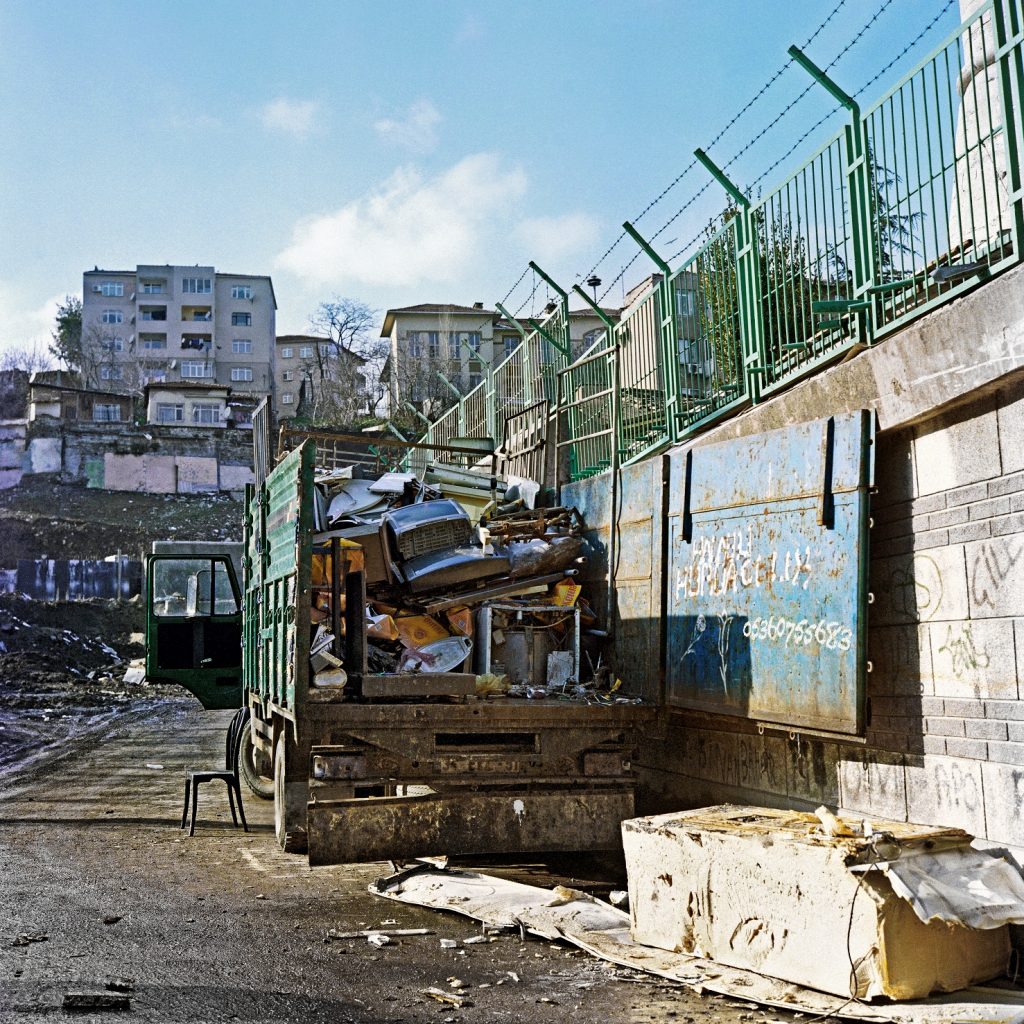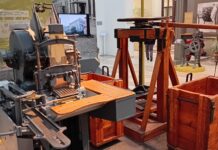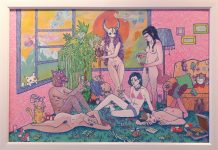KRANK Art will host Irmak Canevi and Zeren Göktan’s exhibition “0 536 075 56 83” from Thursday, 23 November 2017 through Saturday, 6 January 2018.

From the organizer:
KRANK Art Gallery hosts Irmak Canevi and Zeren Göktan’s collaborative exhibition, titled “0 536 075 56 83”. Through a self-initiated process the exhibition locates, makes a title from and transforms a telephone number among the many that we come across within the fabric of the city, into a work of art. The number that gives the project its name also operates as a portal opening on to the sound installation* that is the only artwork on which the two artists have collaborated.
In the background we can see the remains from a demolition. Perhaps the houses that were erected overnight were destroyed again in just one night. There is a truck full of goods and chattels; it’s parked, its door is open and there is a plastic chair in front of it… Written on the wall next to this junk removers’ truck that hauls all the adventures of the visible and its perception through preserving a difference that cannot be counteracted or suppressed, is a phone number: “0 536 075 56 83”.
Utilising the city in which they live as the space of their artwork and its every detail as their material, the artists prefer to gaze at the city from a quiet place where they have muted its sounds. Children in Zeren Göktan’s photographs and the installations made using coffee cups by Irmak Canevi make room for themselves at the periphery of the big city that keeps bustling not too far away, while also providing us with clues as to where they originally come from. When the viewer dials the number that is also the title of the show he starts to hear the old sounds of this new fictitious world.
The inspiration behind Irmak Canevi’s title for his installation “Caffeine Makes For Busy Bees / Arılar da Kafein Sever” is a study where it was found that bees too can not start their day without caffeine. Its source of material is found in the coffee cups he drinks his coffee from, every morning before starting work at his studio. The emptied paper cups are cut and filled with concrete and wax, and transformed. The coffee cup is no longer an object that we can use, but rather an object of Canevi’s work of art that provides us with the conditions of making use of the parody of that work. Exploiting a ready-made functional object of the present-day consumer society, Canevi puts this object through a process of deconstruction. While Marcel Duchamp, one of the masters of modernism, entrusts the deconstruction of such a ready-made object to the viewer, Canevi performs this act himself as part of his practice of art, and thus, through a series of contrivances, consumption is transformed into production; garbage into still life, and as such into a work of art.
In his series “Masters at Work / Usta İşi” Canevi reconsiders the details of the street that he has recorded. The artist makes a model from the photographs of the nexuses of the city that could be described as ‘haphazard’ or ‘flawed’, through making use of unusual compounds of materials. He challenges the viewer by overlapping art and an image that should not belong in the realm of aesthetics. Each meticulously showcased ‘lyrical praise’ constitutes one part of a new whole. Adopting the dreams of a disheartened city planner, the artist proposes a different narrative of transformation and regeneration.
In her photograph series titled “Arka Bahçe / Backyard”, Zeren Göktan takes inspiration from a backyard that everyone has had in their lives where the belongings that we part with are disposed of and forgotten. While we have created countless games in these gardens where our first experiences of our encounters with the outside world took place in our childhoods, having discovered the faculty of imagination the human being yearns for this world of playfulness that one strives to keep alive in their memories as years go by. In her photographs, the artist makes a present of her dreams to the children she has posed in places that seem inaccessible or even dangerous to approach. Looking from a high vantage point everything has become smaller and the realm has broadened because of the child’s point of view. Because the World is transformed into a toy when viewed from high above. Rather than digging deep like Alice in Lewis Carroll’s “Alice in Wonderland”, Göktan’s children are out to explore the surface. The subject has abandoned the perspective made available to her. Now everything that is visible, that is, all information available, is right in front of her eyes. The games they create are games without set rules, like those of Alice, with no clear winners and losers. The whole atmosphere makes us witness the moment when the minor game of the human being and a major game coincide, when the human game and the divine game intertwine.
In “0 536 075 56 83” exhibition, KRANK Art Gallery invites the spectator to the magical world of games that Canevi and Göktan have created in silent gardens that they have dreamt of, like children challenging the world of adults that becomes smaller and smaller as one ascends. This game that exists only in the mind and culminates in nothing other than a work of art, also renders thought and art into a reality and causes them to induce a perturbation in the reality of the world.
*We thanks Benjamin Fenton for sound editing.
Irmak Canevi
The materials used in Irmak Canevi’s work are, in his own words, “as unimportant as the artist.” On the other hand, what is important is the process of giving them form. Rendering materials to be ordinary in this way means everything can be used in the artistic practice. From this aspect, in the works of the artist we can read a “lyrical praise” about the way things come together. How and where one element is combined with another is an act that consolidates the holistic evaluation of this montage. This way of balancing the means and ends places an emphasis on the process and the craft, as opposed to the result –the work of art as the final product–and presents the work almost as a political stance.
Zeren Göktan
Pursuing the possibility of a new and fictional language in her works, Zeren Göktan also evaluates the codes of the society and the culture in which she lives in her artistic practice. The point of view that she employs in her projects, which have a fictional and sometimes even a spontaneous tone, aims to make visible the conditions in which an individual lives, as well as their problems and sensibilities concerning their era. Göktan’s subjects, in terms of the narrative she delves into, and the scene compositions, gestures and mimics, which she attends to in the finest detail, all originate from the meticulous and scrutinizing component of her identity as an artist. Through her works she offers an intimate landscape for the spectator to gaze at, without the use of a didactic or clichéd language, and gracefully looking out on to challenging issues.
—
For more information, check out the official exhibition page.
Address: Tomtom Gardens No: 8 Tomtom Kaptan Sok. Beyoğlu/ISTANBUL
E-Mail: info@krankartgallery.com
Photo courtesy of Krank Art Gallery.











